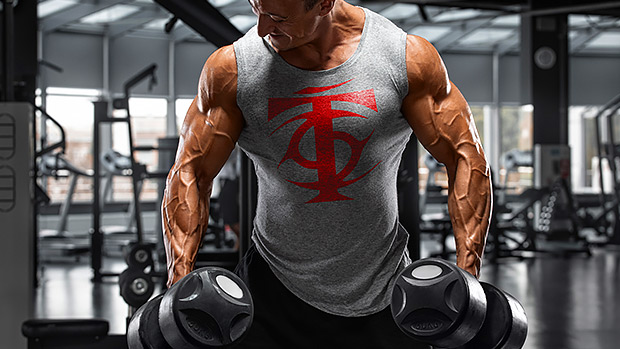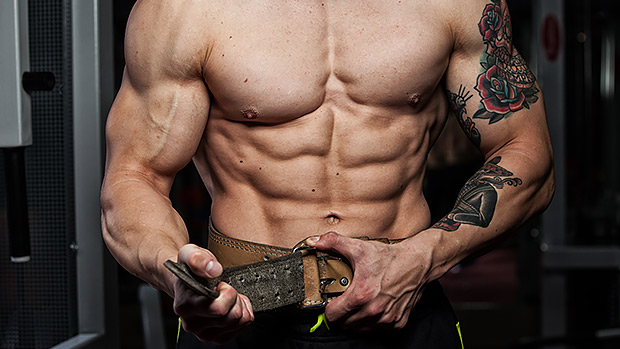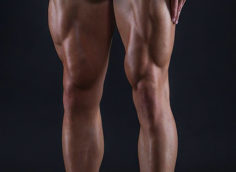Although strength and muscular hypertrophy can be built simultaneously, the best possible results are obtained sequentially.
This is based on the principle of phase potentiation. Very simply, adaptations built in one training phase potentiate the gains in adaptations built in the following phase.
Most lifters are familiar with the concept of prioritizing muscle hypertrophy first and then (in a second training phase) switching the focus to strength acquisition.
Here I'll take you a bit deeper into the underlying mechanisms and rationale for the sequential approach to training while also providing a training program to show you what this approach looks like in the real world.
First, let's look at the actual program. Then we'll take a look under the hood to gain a thorough understanding of the rationale behind this approach.
Day 1: Lower Body
Suggested exercises:
- Barbell Back Squat
- Weighted Back Extension
- Leg Press
- Seated Leg Curl
Loading parameters:
- Week 1: Work up to 2 sets of 6 reps of each exercise.
- Week 2: Work up to 3x6 with slightly (2.5 to 5%) more load.
- Week 3: Work up to 4x6 with slightly more load.
- Week 4: Work up to 5x6 with slightly more load.
Day 2: Upper Body
Suggested exercises:
- Flat Barbell Bench Press
- Weighted Pull-up
- Incline Dumbbell Press
- Chest-Supported Row
Loading parameters:
- Week 1: Work up to 2 sets of 12 reps of each exercise.
- Week 2: Work up to 3x12 with slightly (2.5 to 5%) more load.
- Week 3: Work up to 4x12 with slightly more load.
- Week 4: Work up to 5x12 with slightly more load.
Day 3: Lower Body
Suggested exercises:
- Trap Bar Deadlift
- Barbell Hip Thrust
- Hack Squat
Loading parameters:
- Week 1: Work up to 2 sets of 6 reps of each exercise.
- Week 2: Work up to 3x6 with slightly (2.5 to 5%) more load.
- Week 3: Work up to 4x6 with slightly more load.
- Week 4: Work up to 5x6 with slightly more load.
Day 4: Upper Body
Suggested exercises:
- Weighted Dip
- Pulldown
- Barbell Overhead Press
- Inverted Suspension Row
Loading parameters:
- Week 1: Work up to 2 sets of 12 reps of each exercise.
- Week 2: Work up to 3x12 with slightly (2.5 to 5%) more load.
- Week 3: Work up to 4x12 with slightly more load.
- Week 4: Work up to 5x12 with slightly more load.
Day 1: Lower Body
Suggested exercises: Same as Phase One
Loading parameters:
- Week 1: Work up to 2 sets of 12 reps.
- Week 2: Work up to 3x12 with slightly (2.5 to 5%) more load.
- Week 3: Work up to 4x12 with slightly more load.
- Week 4: Work up to 5x12 with slightly more load.
Day 2: Upper Body
Suggested exercises: Same as Phase One
Loading parameters:
- Week 1: Work up to 2 sets of 6 reps.
- Week 2: Work up to 3x6 with slightly (2.5 to 5%) more load.
- Week 3: Work up to 4x6 with slightly more load.
- Week 4: Work up to 5x6 with slightly more load.
Day 3: Lower Body
Suggested exercises: Same as Phase One
Loading parameters:
- Week 1: Work up to 2 sets of 12 reps.
- Week 2: Work up to 3x12 with slightly (2.5 to 5%) more load.
- Week 3: Work up to 4x12 with slightly more load.
- Week 4 Work up to 5x12 with slightly more load.
Day 4: Upper Body
Suggested exercises: Same as Phase One
Loading parameters:
- Week 1: Work up to 2 sets of 6 reps.
- Week 2: Work up to 3x6 with slightly (2.5 to 5%) more load.
- Week 3: Work up to 4x6 with slightly more load.
- Week 4: Work up to 5x6 with slightly more load.
Notes:
- Exercises are only suggestions. Feel free to make substitutions, but stay consistent with the overall program theme.
- Sets/reps are only suggestions. Feel free to make slight adjustments, but stay consistent with the overall idea.

1. Base Building (Work Capacity)
The first phase in this program is designed to improve your work capacity. Each week, you'll add an additional work set while also slightly increasing the weight. Conveniently, this process will also accelerate muscular growth.
Later, when you shift to heavy weights, you'll have not only more muscle, but also the ability to do more work per session. Also, and not unimportantly, you'll have thicker/stronger connective tissues, which reduces your injury risk during the upcoming peaking phase.
An additional benefit of regularly changing your volumes and intensities? It helps to offset "adaptive resistance," which is your body's tendency to react with less and less adaptation when presented with monotonous training.
All of these changes can be thought of as building a "base" of structural and performance adaptations that function to optimize your response to the subsequent peaking phase.
2. Peaking (Strength)
Now that you've enhanced your base, it's time to build your peak by lowering your overall volume and increasing the loading intensity.
As a hypothetical, let's say you bench-pressed 5x12 with 185 pounds in the last workout of the base-building phase. You won't notice a big improvement during the first peaking session because your body is accustomed to higher-rep efforts. You might hit 2x6 with 200 pounds.
On your second bench workout, however, you'll feel so strong you'll find yourself double checking the bar because you don't trust the numbers. Here's why: As you enter the peaking phase, you've got the recovery capacity for 5 sets of 12, but now you're only required to do 2 sets of 6.
Doing that first week of peaking, you'll still be recovering from the high volumes of work from the base building phase you just completed. You haven't lifted heavy for a while, so your strength levels won't seem improved. On week two, however, things start coming together.
Now, you're fully recovered from high volume training and you've got the work capacity for 5x12. BUT, you'll only be doing 3 sets of 6. When you're doing 3x6 while possessing the recovery capacity for 5x12, your strength levels improve like never before because you're now liberating excess recovery capacity, which serves to drive new adaptations. It's like bringing a gun to a knife fight.
Of course, progress on any program is finite and this program is no exception. After a month of peaking, you'll have lost some of the work capacity you previously developed due to not specifically working on it.
However, because you're now stronger, you'll find that when you switch back to base building again, whatever weight you lifted during your final base-building workouts will be a bit easier than before.
So, just as an example, if you started your last base building phase with 155 and finished it with 185 pounds, the second time around you'll likely start with 170 and finish with 200 pounds. Then, entering your next peaking phase, you'll experience a similar rate of improvement as well.
Notes:
- Rather than target the entire body with base building volumes simultaneously (which would likely result in unrecoverable volumes during the later weeks of the base building phase), I've opted to "split" the program into an upper/lower format so that only half the body is trained with high volumes at any one time.
- Many readers will note the lack of direct arm, ab, and calf work. Feel free to adjust that as you deem appropriate for your needs, as long as you preserve the underlying intent and principles.
- Although I've designated 4 weeks for each phase for the sake of simplicity, in practice, your phases can be longer or (rarely) shorter, depending on your response to the program. So if, for example, you're still making acceptable progress on week 4 of either phase, feel free to extend it until you eventually hit a wall.
- Inevitably, after an extended period of time using the same exercise menus, you'll experience adaptive resistance (a plateau) and you might also discover that certain muscles have ended up being over or under trained. If you experience any of these issues, it's time to change some or (rarely) all of your exercises and start a new training cycle.
Lots of folks do just fine training for muscle and strength simultaneously by using varied volumes and intensities during the same day, week, or month. But if you're not seeing the gains you expect from your workouts, give this approach an honest 8-week run. You'll be shocked!





